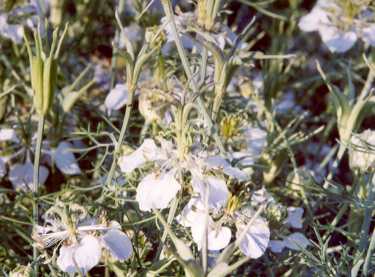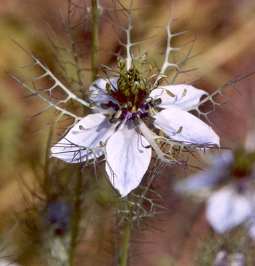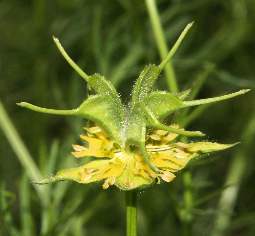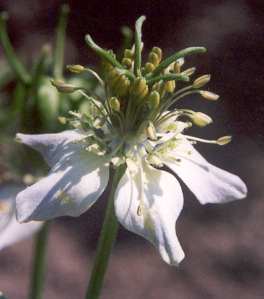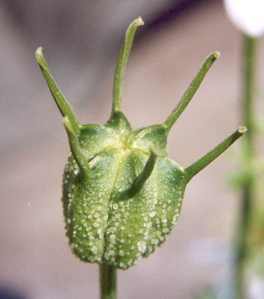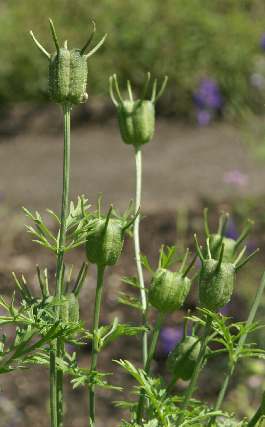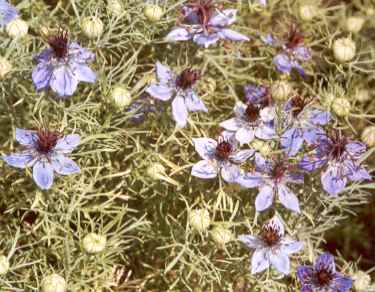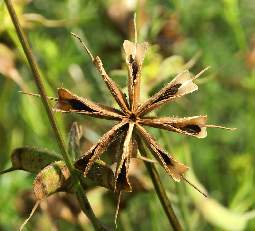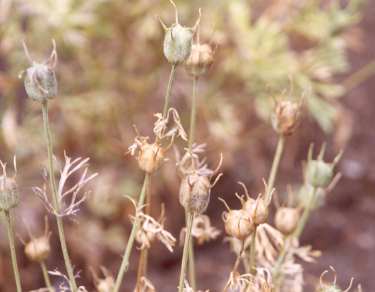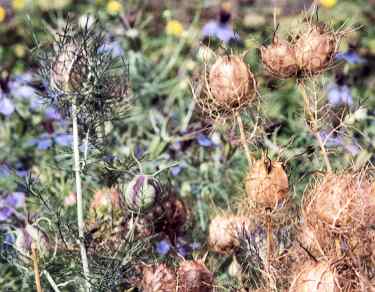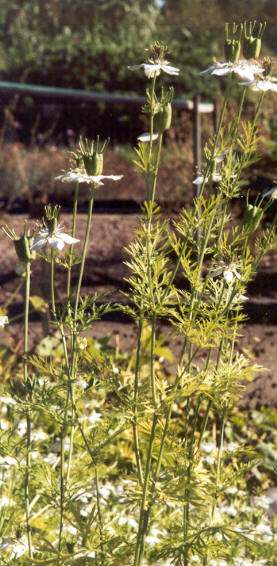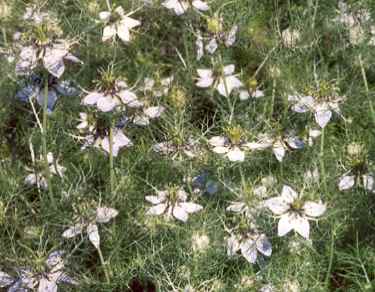Nigella is mentioned in the Bible, but today it is well known not only in Western, but also in Central and South Asia; its main application area is Turkey, Lebanon and Iran. Turkish bread frequently shows the characteristically shaped black grains; another spice sometimes used to flavour Near Eastern bread is mahaleb cherry stones.
From Iran, nigella usage has spread to Northern India, particularly Punjab and Bengal. The spice is mostly used for vegetable dishes; I think it tastes best with aubergines and pumpkin, of which there are many varieties in Bengal. Lake many other Indian spices, nigella develops its flavour best after short toasting in a hot dry pan, or short frying in a little oil (see also cumin).
In the Indian union states West Bengal, Orissa and Sikkim, as well as in Bangladesh and Southern Nepal, a
spice mixture made from five spices is very popular: Panch phoran [পাঁচ ফোরন or পাঁচ ফোড়ন],
better known under its name in Hindi panch phoron [पांच फोरन].
It is used both for meats and vegetables. The composition mostly given
in the literature is whole nigella, fenugreek,
cumin, black mustard
seeds and fennel at equal parts; but this is not the
authentic recipe. In Bengal, cooks use a spice called radhuni [রাধুনি]
for that mixture, which is replaced by black mustard seeds elsewhere, as
radhuni is hardly available outside Bengal, even in the rest
of India. Radhuni is the dried fruits of
Trachyspermum roxburghianum (syn.
Carum roxburghianum), a relative of
ajwain and caraway;
its flavour is, however, more akin to the aroma celery seeds which I recommend as a substitute;
it does, however, also exhibit a pungency comparable to that of ajwain.
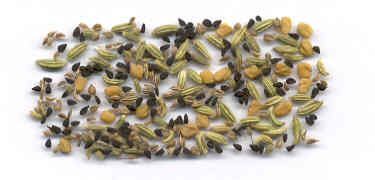
|
| Indian panch phoron five spice mixture |
Panch phoron lends a subtle and harmonic flavour to the foods, chiefly vegetables and fish. It is always fried in oil before usage; in Bengal, cooks almost invariably use mustard oil for that purpose. Another flavouring typical for Bengal is a pungent mustard paste made from black mustard seeds; such mustard pastes play no rôle in other regions of India. Put together, use of panch phoron and mustard products make up for much of the typical character of Bengali food; on the other hand, strong spices like chiles or garlic and also the aromatic spices typical for other North Indian cooking styles (cloves or cinnamon) are used with discretion. Asafetida is popular in places where cooks of other Indian regions would employ garlic. Bengalis are also fond of poppy seeds.
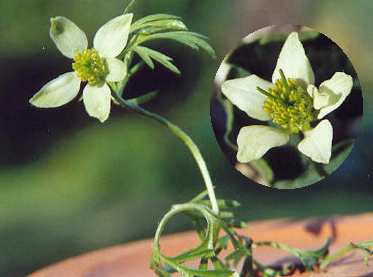
|
| Nigella flower (plant grown from the spice seeds) |
There are many interesting and original vegetable foods in Bengali cooking, some of which make use of vegetables little known outside of Bengal: Shukto [শুকতো] is a spicy vegetable curry which acquires a distinct bitter flavour from korola [করোলা] (Hindi karela [करेला], bitter melon, bitter gourd, Momordica charantia); the bitterness can be controlled by marinating karela in a mixture of salt and turmeric. Potol [পটল] (Hindi parval [पर्वाल], snake gourd, Trichosanthes dioica) is a small-fruited pumpkin relative that is very popular in Bengal for curries and for stuffing, either with ground meats or with cottage cheese.
Yet Bengal has also a large variety of non-vegetarian foods, as it has a low proportion of vegetarians; even most Bengali brahmins, unlike the brahmins of most other Indian regions, do not adhere to vegetarianism. Fish is very popular, especially fresh water fish, and is often braised in a subtly flavoured butter-tomato sauce; similar recipes are also known for chicken. Lastly, one must mention the numerous Bengali sweets, many of which are based on milk products; see kewra flowers for more.
A variety of the panch phoron spice mixture is used in
Southern Nepal, where it is known by its Maithili name panch phorana [पंच फोरना].
Here, the radhuni is not substituted by mustard seeds
but by a spice closer to the original taste, namely ajwain. After frying in mustard oil,
it is mainly used for the vegetable curries (e. g., potato curry) that are served as part of the typical meals
of that region, dal bhat tarkari [दाल भात तरकारी] legumes, rice and curry
.
